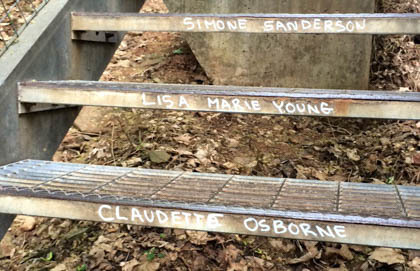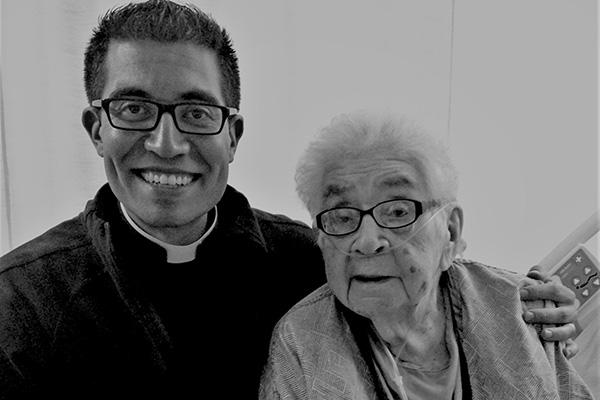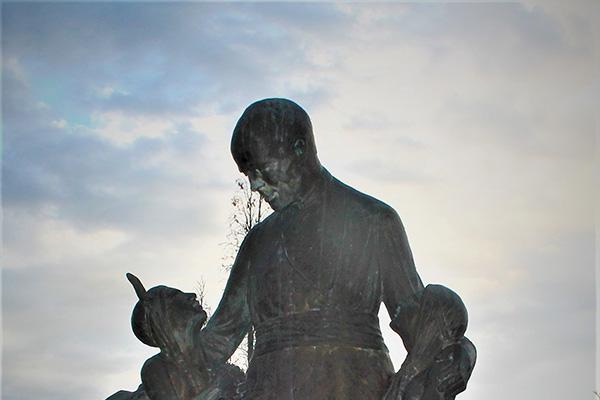I’ve been climbing up 500 stairs that lead from downtown Hamilton to the top of the Niagara escarpment for the last year. This, the longest climb along the mountain brow, has become familiar routine. But one day in May, as I reached the bottom of the stairs, I noticed something unusual. A different woman’s name was written on each of the steps. I looked down at the pavement and saw the message in chalk: “Names of stolen sisters / silent no more.”
A few others were reading the words there as well, and we shared some thoughts about the travesty that has had media buzzing lately. I was deeply moved as I considered the horror of so many Indigenous Canadian women murdered and missing. And I felt at a loss as to what to do next.
Then last week, the Truth and Reconciliation Commission made 94 recommendations on how Canada can heal the scars that residential schools have left on our society and cultural heritage. There is something for everyone in that document, and every Canadian ought to read it. Whether you are in government, education, health care, or simply involved in your community, this report has advice for you.
Have a look at the recommendations the commission has offered specifically to church leadership:
“... Develop ongoing education strategies to ensure that their respective congregations learn about their church’s role in colonization, the history and legacy of residential schools, and why apologies to former residential school students, their families, and communities were necessary.”
And:
“We call upon leaders of the church parties to the Settlement Agreement and all other faiths ... to develop and teach curriculum ... on the need to respect Indigenous spirituality in its own right, the history and legacy of residential schools and the roles of the church parties in that system, the history and legacy of religious con?ict in Aboriginal families and communities, and the responsibility that churches have to mitigate such con?icts and prevent spiritual violence.”
But as I look at myself and at many around me, I don’t see us poised to act on this. I see us smiling, nodding, and backing slowly away from the issue. Our defense, of course, is that we know the history. We’re aware. And we’re ready to respect anyone who comes through our doors. After all, the church doesn’t run residential schools anymore, and it hasn’t for years. If our church leadership decides to act on the recommendations, then we'll go along with it, but we're not prepared to go to bat for this one. There’s a kind of “I’ve got nothing against them” mentality. Which is great, except that means we also have nothing for them.
This kind of attitude is simply not enough. Our society has a severe equality deficit, thanks to that checkered past of “cultural genocide.” To those of us in the church: We owe our First Nations. Yes, we’ve come a long way since the days of residential schools. Yes, our churches are now culturally transformed from what they were 75 years ago. And yes, many denominations have made great strides. But that is not enough. Just as our First Nations brothers and sisters carry wounds from years past, we carry the baggage of the faith communities in Canada before us. We need to go further and be better. And formal apologies are just the starting point.
I submit that we need to consider our place and legacy in the story and focus on learning from it. Paying more attention to the unfamiliar is one way to combat unjust inequalities. As the African proverb that Chinua Achebe made famous around the world goes, “Until the lions have their own historians, the history of the hunt will always glorify the hunter.” And when the stories have belonged to the hunters for centuries, we need an excess of lions’ perspectives to regain balance.
Consider those murdered and missing women. Justice Murray Sinclair described the problem as being rooted in the experiences of those who attended residential schools: “They were stripped of their self-respect and they were stripped of their identity.” Our stolen sisters felt the effects, as does every Indigenous woman in Canada. Cultural genocide has indeed been committed, and revitalization doesn’t happen overnight.
As I walked up those stairs, I prayed for the women, their families, and their communities. But there is more that we can do, as the Truth and Reconciliation Commission has urged. We need to go out of our way to implement the recommendations they’ve offered. It will be a long, hard climb to overcome the equality deficit in our country—as it must be.








